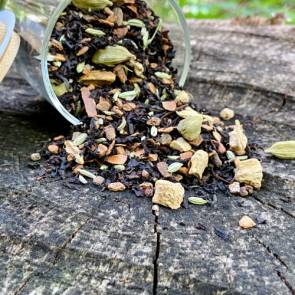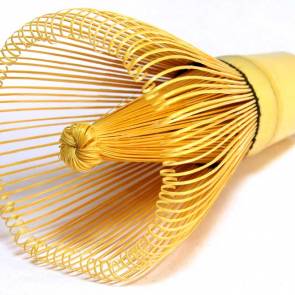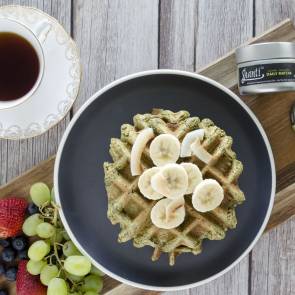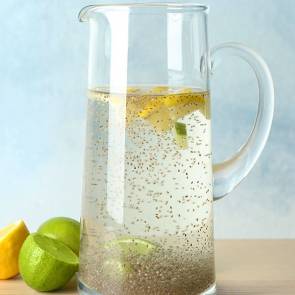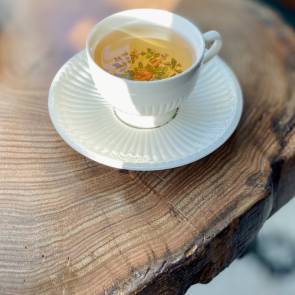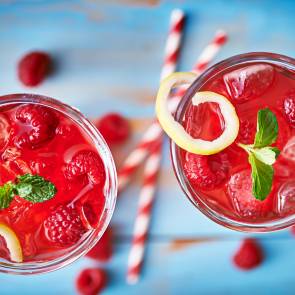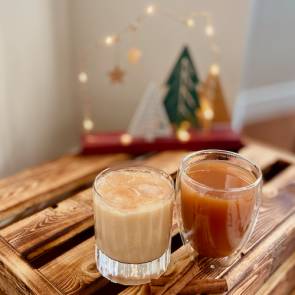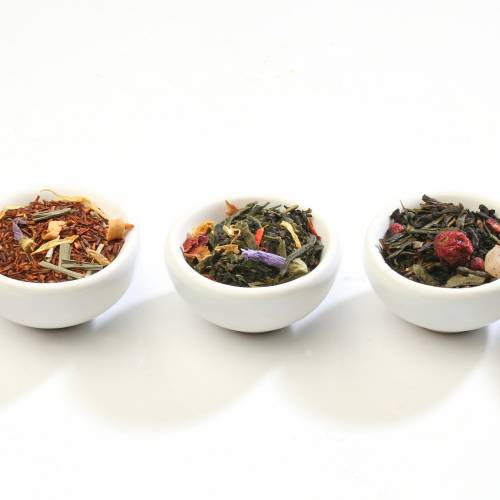
Want to learn more about tea, but not sure where to start?
Tea vocabulary is more than simply knowing the right words to use to describe a tea. Knowledge of commonly used words to describe tea will help you to better understand what tea masters look for in tea tastings. For example, you may take a sip of a Japanese Sencha and be able to note that it has a grassy flavour. But if you’ve read the term buttery, you may also notice that your cup of Sencha has a buttery mouth feel. If it doesn’t, you could probably assume you’re cupping a second flush Sencha.
Tea Leaves
This is a great place to start! What do all those letters mean at the end of the name of some teas? What exactly IS Orange Pekoe?
Orange Pekoe indicates that the tea is a whole leaf. It has nothing to do with a particular flavour. It is believe that of the most respected Dutch aristocratic families, Oranje-Nassau is the source of the term “orange” being applied to teas. The Dutch East India Company may have marketing tea as “orange” to associate it with the House of Orange-Nassau Pekoe comes from Chinese meaning “white down/hair”, referring to the white “hairs” found on tea tips.
- Tippy (T): The top leaf of a tea plant is the tip, and when dried it becomes thin with little fuzzy hairs, and is golden when processed as a black tea, silver when processed white or green. The top leaf is the most desirable part of a tea plant. Tippy is applied when there are a significant number of golden tips in a black tea.
- Golden (G): Applied to black teas, when you find golden tips in your black tea
- Flowery (F): In black tea leaf grading, flowery orange pekoes are typically larger leaves.
- Orange Pekoe (OP): Easy to confuse with the Orange Pekoe brand, an OP grade actually means a whole, large, unbroken leaf (so the opposite of the teabags you buy in the grocery store). Any whole black tea can be an Orange Pekoe grade, regardless of flavour.
- Souchong: A tea made using the leaves found lower on the tea plant.
- Broken (B): Very much what it sounds like, a broken leaf. Think of our Strong Assam, which is a GBOP tea (golden, broken orange pekoe).
- Fannings: Fannings, also sometimes referred to Dust, or Dust and Fannings, is a grade of tea made up of the fine sifted materials made intentionally or remaining behind after the production of whole leaf teas. These dust and fanning teas are used in the production of teabags, and produce a strong flavour with little complexity. It’s important to note that Dust is it’s own category of tea, the smallest particle size possible, basically tea dust. However, you will often see dust and fannings together, because the two grades are usually mixed together.
- OP, OP1: A term sometimes used to describe green teas, meaning a whole, unbroken leaf.
- Finest, Special Finest (F, SF): Finest indicates a tea of a higher quality, and special finest indicates tea of the highest quality. This is a relatively new addition to the grading system, as so many TGFOP teas are in the market now.
- 1: Seen in black tea grading and green tea grading, a 1 indicates the tea a higher quality.
Putting it together:
- TGFOP (Tippy, golden, flowery, orange pekoe)
- SFTGFOP1 (Special, finest, tippy, golden, flowery, orange pekoe, one)
- BOP (Broken orange pekoe)
- GBOP (Golden broken orange pekoe)
These are some examples of a black tea with grading, but there are certainly other combinations out there.
Green, white, oolong
These teas do not have a standard grading system. You may see some green teas referred to as OP or OP1, often in teas from Sri Lanka. There is also a grade of green tea from China called Hyson, a tightly rolled whole leaf.
Basic Concepts
- Aroma: This one speaks for itself, aroma describes the scent of a tea, whether the dry leaf aroma or infusion aroma. The aroma can also describe the scent experienced at the same time of sipping the tea.
- Bouquet: Another descriptor of scent, bouquet explains ____
- Mouthfeel: The mouthfeel of a tea is basically what it sounds like. It describes how the tea feels in the mouth.
- Infusion: Describes the act of soaking leaves in water, and the leaves remaining from the water. It does not describe the liquid obtained by infusion, this liquid is called the liqueur.
- Liquor: The liquid produced by infusing tea leaves in water. Note the aroma and colour of the liquor.
- Flavour: The taste
Aroma and Flavour Descriptors
These are just a few general descriptors, you may find that these are not exactly the taste you are experiencing, and that is okay! Use the word that describes the flavour best. For example, you take a sip and think of marshmallows, so use that to describe the flavour! Just because a term isn’t part of this list, or another tea vocabulary list, it doesn’t mean you can’t use it.
- Citrus, lemon, orange
- Apricot, peach, apple
- Grassy, earthy, woody
- Hay, dirt, pine
- Malty
- Winey, grapey
- Chocolate, vanilla, nutty
- Smokey, burnt, grilled
- Muscatel
- Spicy, cinnamon, nutmeg, peppery
- Floral, rose, Jasmine, orchid
- Herbaceous, peaty, mossy
- Honey, licorice


